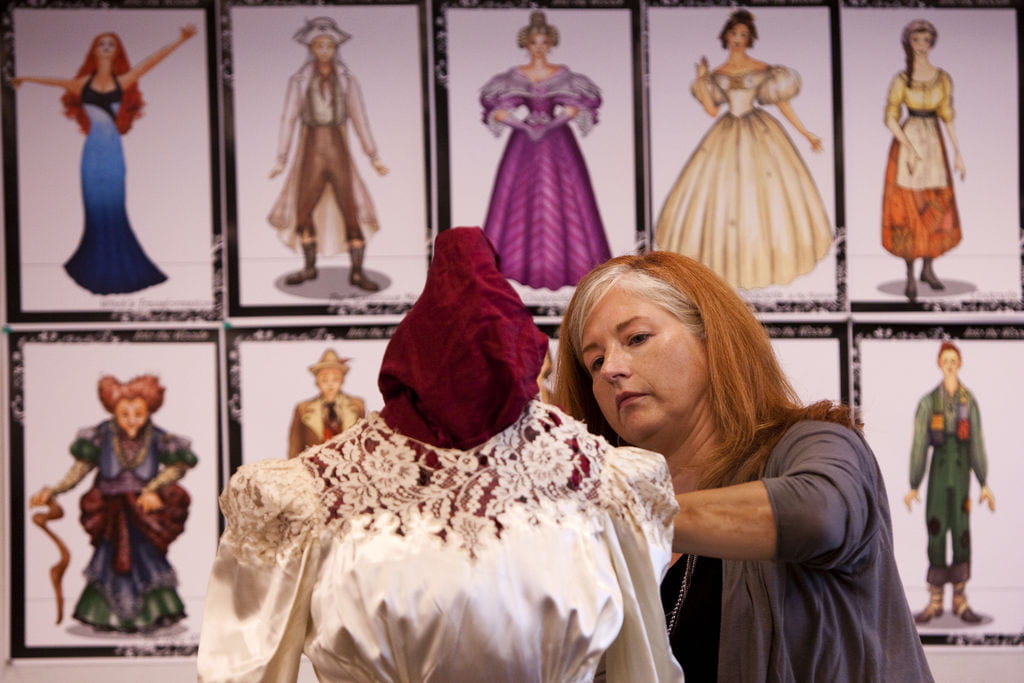Film, fashion focus of fall exhibit
UCI Libraries to showcase Hollywood’s role as style maker.

Holly Poe Durbin pulls a floor-length, coral-hued gown from the racks at UC Irvine’s Claire Trevor School of the Arts costume shop, a repository of period, vintage and fantasy clothing and accessories used in campus productions.
Like the other garments, the lavishly ruffled gown has a story. Durbin, UCI associate professor of drama and an award-winning costume designer for theater, film and television, explains: “This dress is a replica of one Joan Crawford wore in the 1932 film ‘Letty Lynton.’ It created a huge sensation, and Macy’s sold about 500,000 copies.”
The original gown, by MGM chief costume designer Adrian, was white organdy and featured a risqué, plunging back and frilly, exaggerated shoulders. It marked the introduction of Hollywood as a major arbiter of style at a time when Paris couture houses ruled.
“Fashion and film went together for marketing purposes in the 1930s, and I think it still works that way,” Durbin says. “You can watch ‘Mad Men’ and see looks from the 1950s and ’60s that are affecting current trends.”
“Putting on the Glitz: Hollywood’s Influence on Fashion” is the UCI Libraries’ fall exhibit, highlighting movies and designers from Hollywood’s golden years through the 20th century. Items on display will include drama department costumes (opening reception only) and books, magazines, photos, videos, and posters from the libraries’ collections.
The exhibit, at Langson Library, kicks off with a reception on Wednesday, Oct. 20, and continues through April 2011. The opening-night event will start at 5:30 p.m. and feature a talk, “From Hollywood to Main Street: The Democratization of Film Fashion” by history professor Lynn Mally.
“Hollywood became a potent cultural force in the 1930s, with the ability to reach almost all social classes,” says Becky Imamoto, research librarian for history and the exhibit’s curator. “New fashions spread quickly.”
Movie studios capitalized on this by marketing home sewing patterns based on popular film designs, Durbin notes.
In fact, the exhibit will include a homemade, Renaissance revival-style wedding dress made from a sewing pattern inspired by 1936’s “Romeo and Juliet.” A Pasadena estate donated the 1930s-era gown to UCI, Durbin says.
But Hollywood didn’t just dictate fashion trends; it promoted escapist fantasies during the dark days of the Great Depression.
“You wouldn’t believe the furs and jewels shown in films in the 1930s!” Imamoto says.